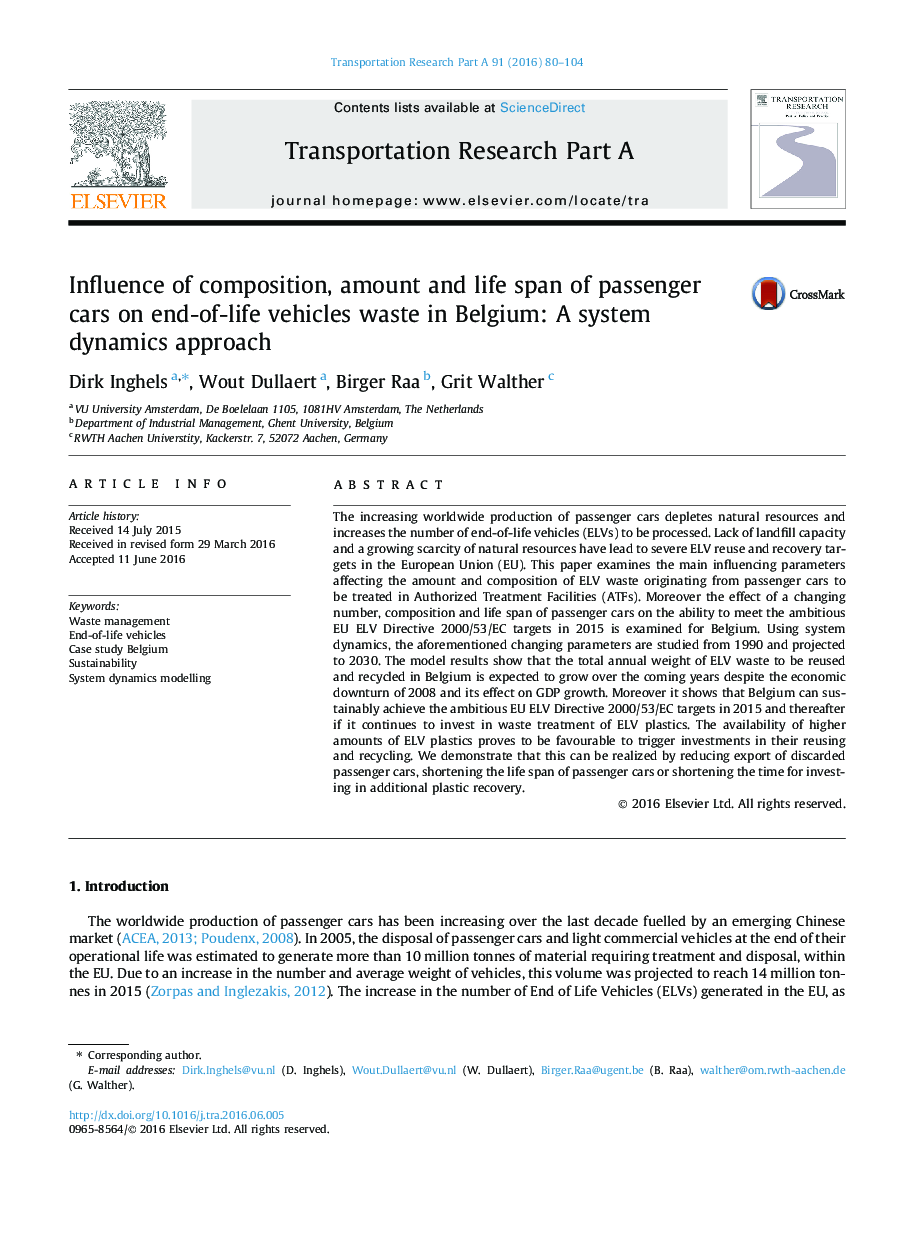| کد مقاله | کد نشریه | سال انتشار | مقاله انگلیسی | نسخه تمام متن |
|---|---|---|---|---|
| 310369 | 533081 | 2016 | 25 صفحه PDF | دانلود رایگان |
• Support policy making on end-of-life vehicle (ELV) of passenger cars.
• Study impact of changing amount, composition and life span of Belgian passenger cars.
• Analyse their effect on ELV performance; system dynamics is used as tool for analysis.
• Assessment of the Belgian policies for attaining the ELV Directive targets in 2015.
• Suggest policy recommendations for better ELV performance.
The increasing worldwide production of passenger cars depletes natural resources and increases the number of end-of-life vehicles (ELVs) to be processed. Lack of landfill capacity and a growing scarcity of natural resources have lead to severe ELV reuse and recovery targets in the European Union (EU). This paper examines the main influencing parameters affecting the amount and composition of ELV waste originating from passenger cars to be treated in Authorized Treatment Facilities (ATFs). Moreover the effect of a changing number, composition and life span of passenger cars on the ability to meet the ambitious EU ELV Directive 2000/53/EC targets in 2015 is examined for Belgium. Using system dynamics, the aforementioned changing parameters are studied from 1990 and projected to 2030. The model results show that the total annual weight of ELV waste to be reused and recycled in Belgium is expected to grow over the coming years despite the economic downturn of 2008 and its effect on GDP growth. Moreover it shows that Belgium can sustainably achieve the ambitious EU ELV Directive 2000/53/EC targets in 2015 and thereafter if it continues to invest in waste treatment of ELV plastics. The availability of higher amounts of ELV plastics proves to be favourable to trigger investments in their reusing and recycling. We demonstrate that this can be realized by reducing export of discarded passenger cars, shortening the life span of passenger cars or shortening the time for investing in additional plastic recovery.
Journal: Transportation Research Part A: Policy and Practice - Volume 91, September 2016, Pages 80–104
